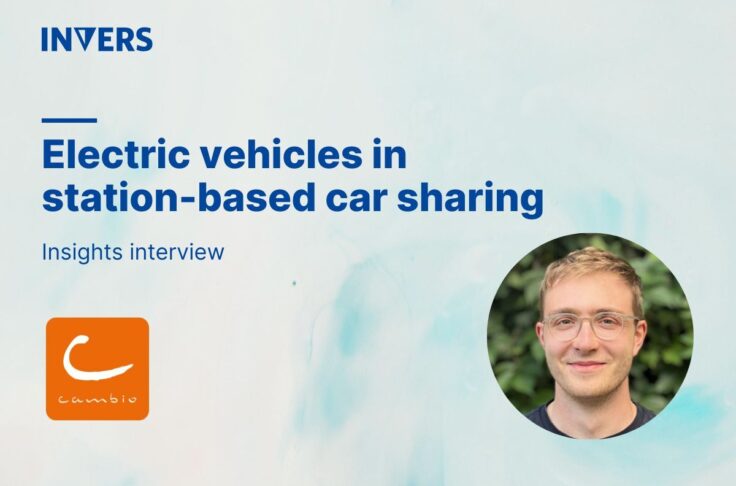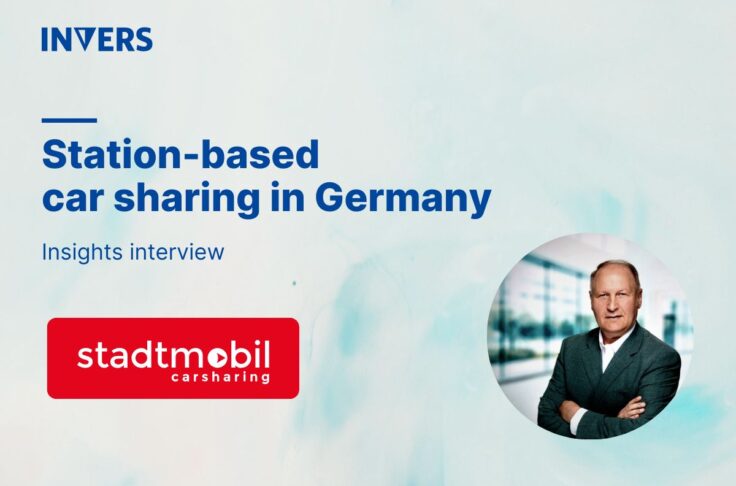Vehicles-as-a-Service: Connecting the Future of Mobility – MOVE London Panel Recap
Summary
In their panel discussion at MOVE London 2021 Bharath Devanathan, CBO at INVERS, Graeme Risby, CEO at Hiyacar, Rui Ferreira, CCO at Onto, and moderator Andrea Aunon of London & Partners discussed technological challenges for shared mobility operators and the role of advanced technologies in this sector.
The “Vehicles-as-a-Service” (VaaS) concept comprises innovative on-demand mobility services. Just as Netflix subscribers can choose from a wide range of movies at any time, mobility operators are offering manifold and demand-driven mobility options for everybody. Car subscription services in particular have recently become a popular option for operators to add. High customer expectations of convenience and reliability force VaaS providers to build up a sophisticated tech stack, ensuring a seamless and purely digital user experience.
Integrate vehicles with a developer-friendly solution
The foundation of all shared mobility services is connected vehicles. Operators need to have remote access to their fleets to send commands and consume reliable data in real-time. This can be achieved by either using after-market telematics and connectivity solutions, or by choosing a vehicle that comes connected from the factory; an option increasingly offered by car manufacturers to provide remote access to their vehicles.
Despite these connectivity advancements by OEMs, there is still no uniform and standardized way of communicating with vehicles and integrating vehicles from different manufacturers remains challenging. In some cases, the communication protocols even differ for models from the same manufacturer. This lack of standardization causes complexities for mobility services that operate with more than one brand or model. Therefore, it is critical for shared mobility providers to get developer-friendly access to as many vehicles as possible. By partnering with a technology provider that aggregates different APIs to make them all accessible via a single interface, integration complexities can be reduced significantly. This empowers shared mobility providers to stay flexible while scaling and diversifying their fleets.

Be prepared to react to changing market conditions
The rapid changes in the market for new mobility require flexibility not only in terms of vehicle choice, but also with regards to the business model and the operator’s mindset. Entrepreneurs who started off solving one problem often recognize that customer needs have already moved them to another problem. Listening to the market and finding out what the customers’ desires are is key to success.
It is therefore not surprising that new business models are emerging regularly and that the differences between them are blurring. Shared mobility providers are entering new partnerships with third-party services to provide additional offerings like insurance coverage or free public charging. The future will also see an increase in strategic alliances between shared mobility providers who share vehicles with each other to jointly respond to changes in demand and overcome supply bottlenecks. This new, nimble approach to business and operations requires a nimble tech stack that is open for third-party tools and services, and allows for data as well as asset sharing.
The future is electric and shared
Electric vehicles (EVs) are already widely used in the shared mobility industry, and they are also playing an increasingly important role in private transport. But in some cases, adaptation is being held back by a lack of infrastructure. Not everyone can charge an electric vehicle at home, and public charging points are not yet available nationwide and in sufficient quantity. One solution could be innovative technologies, such as an inductive charging of vehicles while driving. A much simpler solution is giving people access to EVs through vehicle sharing. This has the added benefit of fewer parking spaces being used by idle cars, spaces which can then be re-purposed for public use or for docking spaces for active mobility vehicles like e-bikes, scooters, etc.
We’re also seeing the trend of consumers wanting to continue enjoying cars, but without the hassles of car ownership like maintenance, repairs, etc. The widespread availability of attractive “Vehicle-as-a-Service” offerings will meet that need and give the shared mobility industry further momentum to transform the transportation sector.
Consult with us now and benefit from our 25+ years of experience in the global shared mobility market. Tell us more about your business idea and talk to an expert. Together, we make mobility shareable!


